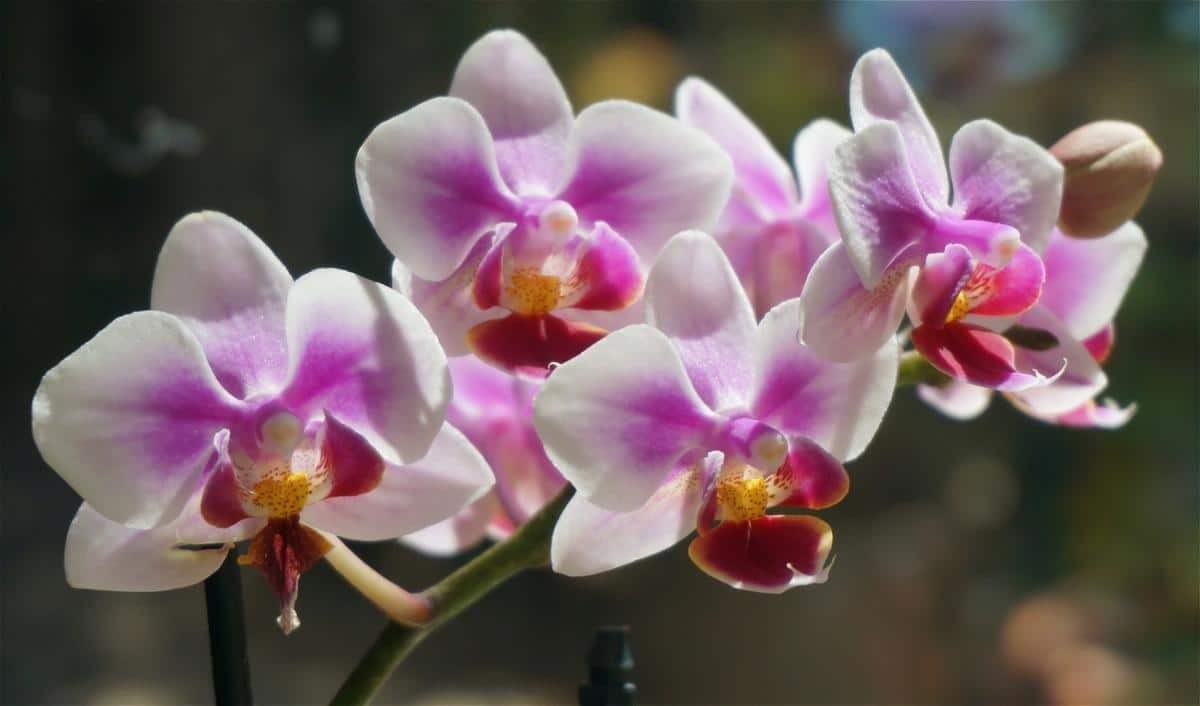
If you have come this far looking for solutions to eliminate fungi from orchids, it is because you have realized that your plant is not looking its best lately. That's why, It's time to find the most effective treatment.
Pay attention, because we are going to give you tips to prevent the appearance of fungi and, if we are already late with this information, We also have tips so you can eliminate the fungal infection and your plant will be strong, beautiful and healthy again as soon as possible.
Why do fungi appear on orchids?

Orchids are plants that immediately catch our attention thanks to their beauty. However, we all have in mind that they are somewhat delicate y require specific care so that they grow strong and healthy.
A fungal infection spoils the appearance of your plant, but it is not just an aesthetic issue. If the orchid has fungus, These are going to take away part of their nutrients, which could kill your plant.
To prevent this from happening, it is interesting to know the reasons that lead to the appearance of fungi in the orchid:
- Excess humidity. Orchids like to be in a humid environment, but you should not overdo it. If there is too much humidity in the air or substrate, We are creating an environment that is not healthy for our plant, but it is healthy for the appearance and development of fungi.
- Inadequate irrigation. When a plant has a fungal infection, in most cases the reason for Its appearance is that we are watering too frequently. Also be careful with excess watering, because this weakens the plant and can make it more vulnerable to infections.
- Contaminated substrate. Fungal spores remain in the substrate for a long time. That's why, It is not advisable to reuse the substrate of some plants with others. Always plant your orchids in specific substrate for this variety, and that is new.
- Little air circulation. When the orchid is located in a place where it does not receive adequate ventilation, It is more likely that conditions will begin to occur that are favorable for fungi to appear around the leaves and roots.
- Lesions on the leaves. As with other plants, any injury or cut to the leaves or stems They facilitate the penetration of pathogens that can lead to infections.
- General plant hygiene. If a lot of organic debris accumulates around the plant, for example fallen leaves, this can encourage fungal growth.
Orchid variety. Although fungi can appear on any plant, some varieties of orchids are especially sensitive to this type of infection.
Eliminate fungus from orchids with milk

Fungi appear as brown or black spots on leaves and flowers., and it is important to treat them as soon as possible to prevent the infection from seriously and irreversibly damaging the plant.
When it comes to removing fungus from orchids, milk is an essential ally, because it turns out that it has natural antifungal properties.
Mix one part milk to ten parts water and fill a sprayer with this mixture. Make sure the sprayer is clean. and does not contain substances from other chemicals used previously.
Evenly spray the solution over all affected areas of the plant. In the case of leaves, Don't forget to spray from the front and back. It is also convenient that you apply a little of this product to the substrate around the stems.
What you should not do is abuse the quantity. Cover all surfaces, but without overdoing it, or you will be providing the plant with new excess moisture that It could make the fungi proliferate even more.
Repeat this treatment every two weeks for a month, and after that time you should start to see improvements.
As an extra trick, you will get better results if you use skimmed milk. This, having less fat, generates less accumulation of fatty residues on the leaves, and allow them to dry first.
Why is milk so useful when it comes to removing fungus from orchids?

We could say that this is a home remedy that has been passed down from generation to generation because we know that it works, but there is no real scientific basis for its effectiveness, although there are several theories:
- Lactic acid. Milk is rich in lactic acid, a nutrient that has important antifungal properties, and It is responsible for inhibiting the growth of fungal spores.
- Antimicrobial components. Milk contains peptides and proteins that have antimicrobial properties that are useful when combating certain types of fungi.
- Strengthening defenses. It is believed that the application of milk stimulates the natural defenses of the plant, making it more resistant and able to fight infections better on its own.
- Cuticle protection. Some hypotheses say that milk forms a protective layer on the cuticle of leaves thanks to its fat content. This makes it difficult for fungi to reach it.
For all this we have seen, milk is applied to eliminate fungi in orchids, but the mixture of water and milk is also used as a preventive method to reduce, as much as possible, fungal infections.
What does seem to be clear is that this remedy is not equally effective in all cases. It also depends on the type of fungus we have to deal with, since some are more resistant than others.
Another issue to take into account is that This remedy cannot be abused either at a curative or preventive level.. If we apply too much milk to our orchid, we could clog the stomata of the leaves, preventing it from breathing. Additionally, milk is a food and, as such, can attract insects.
To eliminate fungus from orchids, Our recommendation is that you use this milk trick for a month (two applications would have to be made). If you see that it does not work, then you can opt for commercial fungicides.
